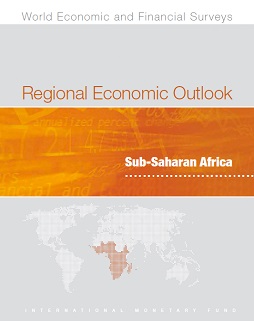
Sub-Saharan Africa
Regional Economic Outlook: Restarting the Growth Engine
May 2017
Growth momentum in sub-Saharan Africa remains fragile, marking a break from the rapid expansion witnessed since the turn of the millennium. 2016 was a difficult year for many countries, with regional growth dipping to 1.4 percent—the lowest level of growth in more than two decades. Most oil exporters were in recession, and conditions in other resource-intensive countries remained difficult. Other nonresource-intensive countries however, continued to grow robustly. A modest recovery in growth of about 2.6 percent is expected in 2017, but this falls short of past trends and is too low to put sub-Saharan Africa back on a path of rising living standards. While sub-Saharan Africa remains a region with tremendous growth potential, the deterioration in the overall outlook partly reflects insufficient policy adjustment. In that context, and to reap this potential, strong and sound domestic policy measures are needed to restart the growth engine.
Restoring the Conditions for Strong and Sustainable Growth
The sub-Saharan African economic outlook remains clouded. Growth slowed sharply in 2016, averaging 1.4 percent, the lowest in two decades. About two-thirds of the countries in the region, together accounting for 83 percent of the region’s GDP, slowed down—although some countries still continued to expand strongly. A modest rebound in growth to 2.6 percent is expected in 2017, but even that rebound will be to a large extent driven by one-off factors in the three largest countries—a recovery in oil production in Nigeria, higher public spending ahead of the elections in Angola, and the fading of drought effects in South Africa, combined in all three countries with modest improvements in the terms of trade. At this rate, growth for the region as a whole will continue to fall well short of past trends and barely deliver any per capita gains.
Restarting Sub-Saharan Africa's Growth Engine
After nearly two decades of strong growth, average economic activity in sub-Saharan Africa has decelerated sharply, against the backdrop of lower commodity prices, a less-supportive global environment, and, in the hardest-hit countries, a delayed policy response (Chapter 1). However, the full picture is more complex, with considerable heterogeneity across countries. Against this backdrop, two related questions arise: How can growth be revived in the hardest-hit countries? And for countries that are still growing fast, how can growth be sustained?
The Informal Economy in Sub-Saharan Africa
The informal economy is a key component of most economies in sub-Saharan Africa, contributing between 25 and 65 percent of GDP and accounting for between 30 and 90 percent of total nonagricultural employment. While international experience indicates that the share of the informal economy declines as the level of development increases, most economies in sub-Saharan Africa are likely to have large informal sectors for many years to come, presenting both opportunities and challenges for policymakers.


